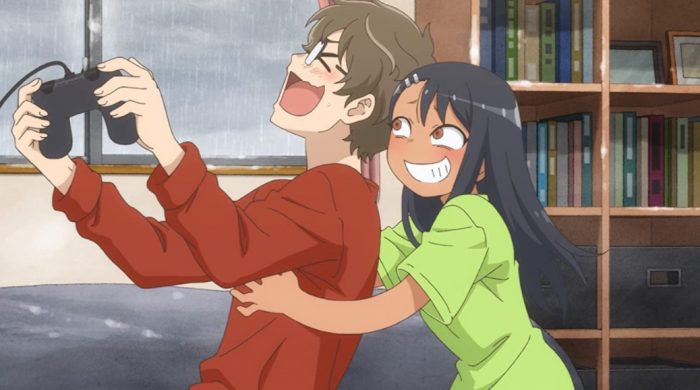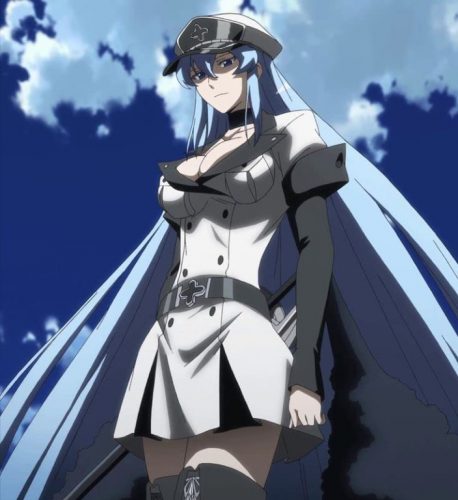What is Sadodere? [Definition; Meaning] - It Hurts So Good!


Welcome to Honey’s Anime, where we produce all kinds of content relating to anime and manga! We’re delving into the Anime Dictionary for this one to answer a simple question—what is a sadodere? For those who don’t know, many common anime archetypes are denoted by the suffix, -dere, which comes from the Japanese “dere dere”, meaning “lovey-dovey”. Combine this with various Japanese words and the terms tsundere, kuudere, yandere, and dandere are born.
What is a Sadodere?
The sadodere archetype comes from the -dere being combined with the root word “sadomasochistic”. When sado- meets -dere, the result is a character who enjoys manipulating and humiliating their love interests, as well as subjecting said love interests to casual and consistent acts of cruelty, with a characteristic lack of empathy. A common dynamic between a sadodere and the object of their sadistic tendencies is one where the latter has a latent enjoyment of the former’s antics, beneath the thick layer of negative feelings brought on by the constant bullying.
Not to Be Confused

Sadodere characters, because of their love for inflicting pain on loved ones, tend to be confused with or considered a branch of the well-known yandere archetype, which features a character completely consumed and obsessed with the object of their affections, who will do absolutely anything, and we mean anything, to maintain a relationship with their loved one. The scope of what a yandere ends up doing to maintain their relationships can fall under sadistic tendencies, but the main difference is that sadodere characters derive pleasure from emotionally torturing their loved ones, yandere characters do not. While the definition commonly refers to a character who enjoys bullying their loved ones, sadodere has often been used in reference to characters who are quite simply sadistic towards everybody and everything, not just the object of their affections. Several popular characters fall into this grey area, such as Orihara Izaya (Durarara!!), Maria (Arakawa Under the Bridge), and Esdeath (Akame ga KILL!).
Watch One in Action!
Ijiranaide, Nagatoro-san! (Don’t Toy With Me, Miss Nagatoro!)

Hachiouji Naoto is a timid, bespectacled wimp who has dreams of one day becoming a mangaka. However, with his severe lack of confidence, his ambition is reduced to something akin to a guilty pleasure. While working in the school library one day, Naoto catches a glimpse of a group of girls who make him uncomfortable with their sardonic glances and subdued fits of laughter whenever he makes eye contact. Naoto is relieved when they eventually leave; however, he does not notice Nagatoro Hayase sitting across from him, with an evil grin plastered all over her face. When she stumbles upon his manga manuscript, the bullying begins, with Nagatoro very quickly making Naoto her toy and the object of her scorn. He is constantly pulled into her wacky hijinks and pranks, but the two begin to establish a strange friendship as Nagatoro’s teasing and merciless bullying becomes an everyday thing. Nagatoro Hayase is the perfect example of a sadodere in anime. She revels in cruelty, especially enjoying it when her antics make her senpai shed tears. With her relentless poking at Naoto’s obvious inexperience, lack of backbone, and overall pastiness, Nagatoro is, for the most part, a horrible, horrible weight on Naoto’s shoulders. However, while sadistic tendencies and cruelty are most of what makes a sadodere, an understated element of the archetype is the fact that they typically act like supervillains towards the people they are interested in romantically. Episode 3 of Don’t Toy With Me, Miss Nagatoro! has various moments that allude to Nagatoro’s interest in Naoto being romantic in nature, particularly when she stands up for him against her own friends, Yosshi and Gamo-chan, when they tease and bully him while he sat with them during lunch. Another element that makes Nagatoro’s affection for Naoto more believable in the context of the series is how flustered she gets sometimes when her teasing of Naoto backfires, and her occasional acts of kindness mostly seen in episode 3.
Final Thoughts

The sadodere character archetype is one of the more obscure “-dere” types; however, with the Spring 2021 season’s featuring of Ijiranaide, Nagatoro-san! (Don’t Toy With Me, Miss Nagatoro!) and 2020's Uzaki-chan wa Asobitai (Uzaki-chan Wants to Hang Out!), sadoderes are getting their moment in the spotlight! Can you think of any other sadodere anime characters? Drop a comment below and tell us about your favourite anime sadodere!
[recommendedPost post_id='23224' url='' title='' img='' class='' widget_title=''] [recommendedPost post_id='22860' url='' title='' img='' class='' widget_title=''] [recommendedPost post_id='22348' url='' title='' img='' class='' widget_title=''] [recommendedPost post_id='288758' url='' title='' img='' class='' widget_title=''] [recommendedPost post_id='323126' url='' title='' img='' class='' widget_title='']

No comments